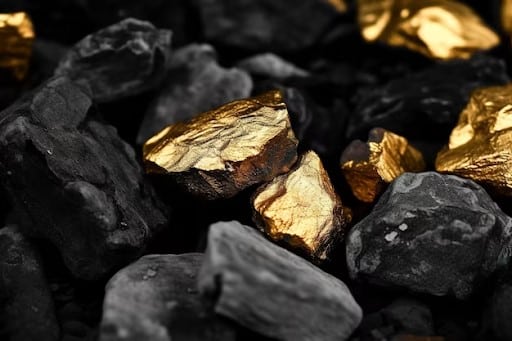Where to find gold in France?
Where to find gold?
Gold has always captivated mankind and influenced civilizations. Would you also like to go in search of this precious metal? Whether it’s flakes, nuggets or jewels, it’s possible to unearth gold in nature, and it’s an exciting quest. So where can you find gold? Discover all our tips!
Where to find gold?
In rivers
It is a well-established fact among gold miners that the origins of gold these rivers, despite centuries of mining and gold panning, continue to harbour the precious metal. Combining a little luck, careful observation and a lot of patience, it’s possible to find and harvest gold.
Gold usually settles in areas where the river’s current slows down, often near trees, rocks or bends. During floods, these areas are ideal for gold accumulation and stagnation.
LGold, due to its high density, always follows the shortest path and requires a strong current to move. This particular path, known as the “Goldline”, can be identified by studying the course of the river, especially during floods. It is along this “goldline” that gold seekers must concentrate their efforts.
See our article on definition of gold to find out more!
On the beach
Although it’s sometimes possible to find glitter and gold nuggets while exploring the beaches, the most common discovery in these areas is that of precious objects mislaid (gold rings, necklaces, bracelets and watches) and lost by holidaymakers.
For those wishing to embark on the quest for these lost treasures, an investment in a specific metal detector is necessary! It needs to be capable of operating on sand, while also being efficient at detecting gold. Some detectors, such as the Garrett AT Gold, the new Garrett AT Max, or the Garrett ATX expert for more difficult terrain, are perfectly suited to this task.
In ruins and old buildings
Looking for gold in old buildings and ruins? These old places can be rich in surprising discoveries. It’s possible that the owners of yesteryear carefully hid their treasures in inconspicuous places, such as in a wall or under a floor, to protect them from envious eyes. To unearth these secret hiding places, the use of a metal detector is a must.
The 3 best gold zones in France
The Armorican Massif
Against all odds, this is France’s richest gold zone! The ancient subsoil of the Massif Armoricain abounds in gold-rich volcanic rock, sandstone, quartz and shale. Most of the region’s rivers (whether dry or active) contain gold. However, in Brittany, gold is often encapsulated in other materials, making it difficult to extract. But the richness of the subsoil means that there’s a good chance of finding gold in the sediments.
Cévennes
Not only are the Cévennes rich in gold, but they are also among the most ideal regions for gold panning. The Ardèche, Hérault and Gard regions are home to powerful rivers flowing from the Massif Cévenol, all of which are rich in gold to varying degrees. The reason? These rivers have their source in an ancient massif endowed with numerous gold deposits, notably in quartz veins. Over time, erosion releases the gold, which can take the form of single grains or large nuggets. If you get close to the primary deposits, you can often find gold!
The Pyrenees
The Pyrenees are among the most auriferous mountain ranges in France. Almost every river flowing down from them contains gold. The best gold-panning spots are centered on the range, where gold can be found in almost any form, particularly in grain form in strategic areas.
How do I get started in gold panning?
4 steps to gold panning in France
Now that you know where to find gold, let’s take a look at the practice of gold panning:
- Identifying local opportunities Start by exploring places close to home, or where you usually go on vacation. It’s best to concentrate on areas you already know to initiate your search for gold.
- Examining and sampling in the field Once on site, the next step is to carefully examine the area and take samples to detect the potential presence of gold. This task requires an understanding of the river’s movement at different seasons. It may be beneficial to learn about the river’s behaviour during flood periods and in summer, in order to identify areas where gold is likely to be deposited.
- Multiply samples Don’t stop at just one sample, as gold may be absent in one area and abundant in another nearby. If you detect the first traces of gold, consider mentally creating a map of gold deposits. This will enable you to target your efforts on areas with the highest concentration of gold.
- Locating the Gold Line The final step involves determining the location of the “gold line” in your area of interest. The gold line represents the trajectory followed by the gold as it moves. Knowing this trajectory will help you to effectively mine the gravels and extract the gold contained within.
What gold panning equipment do I need?
In France, there are a multitude of gold-bearing rivers where you can try your luck, particularly in regions such as the Massif Central, Brittany, Aquitaine, the Pyrenees and the Alps. Gold panning doesn’t require a major investment, and a few basic tools are all you need: a pan or a beater and a sieve, and you’re in business! These accessories are often available in gold panning kits specially designed for beginners.
Once you’ve found gold, contact us at Les Métaux Précieux for your gold transactions.buying and selling gold at the right price. Our experts in gold redemption will advise you on the gold quality found. Their estimate is free and without obligation!
